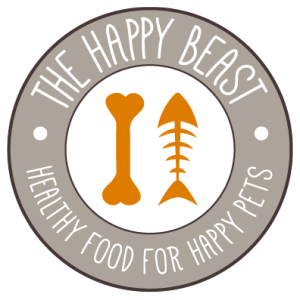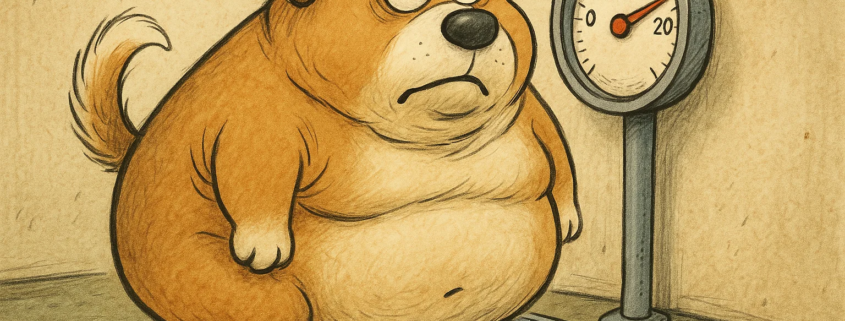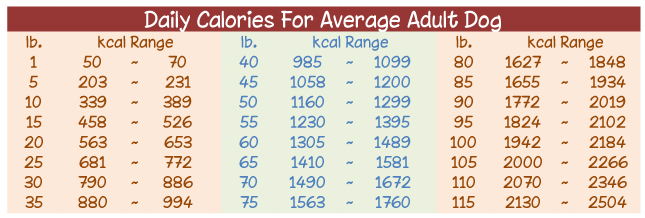An estimated 53% of dogs in the U.S. are obese or overweight and we get a lot of inquiries in the store for weight loss diets and treats. We started The Happy Beast Weight Loss Program to help dogs and cats lose weight in a safe and healthy way, using species-appropriate foods.
Most commercial and prescription dog foods aimed at weight loss are low calorie, low fat and high fiber. The dominant ingredients in these foods are carbohydrates. Why? Carbohydrates (e.g. rice, corn, potatoes) are much lower in calories per pound than meat. The idea is to help your dog feel full by allowing him to eat just as much food while consuming fewer calories.
We find a few problems with this approach.
First, higher carb means lower protein. (Remember, protein is required for muscle and organ growth and maintenance.)
Second, dogs are satiated by fat. A low-fat, high-fiber food will not help your dog feel full. And third, the body can only store a limited amount of carbohydrates, so most unused carbs are converted to fat stores.
Contrast this to the diets we recommend for weight loss that are high protein, moderate fat, and low carb.
In the most recent publication of Nutrient Requirements for Cats and Dogs, the National Research Council finds that canines have no requirement for carbohydrates. The primary source of energy for canines should be fat and protein. For your dog to lose weight, he needs a species-appropriate protein supply and healthy fat to help him feel satisfied. We reduce carbohydrates so the body is forced to use up fat stores for energy.
High Protein
Regardless of your dog’s need to gain or lose weight, he needs a daily supply of high-quality protein. The digestive tract breaks down protein into amino acids which are used for daily body functions including maintaining and repairing muscles and organs. A diet that is primarily high quality protein will provide your dog all 22 required amino acids. If your dog doesn’t consume enough quality protein in his diet, he will synthesize 12 non-essential of the 22 amino acids by breaking down his own healthy muscle and organ tissues. The other 10 amino acids are called essential, because they cannot be synthesized by the body if they are missing from the diet.
Moderate Fat
M
Including a moderate amount of fat in the diet may be contrary to what we’re used to hearing when we talk about weight loss, but healthy fats have an important roles in helping your dog feel full. Dogs feel satisfied when they’ve consumed enough fat, not when they’ve consumed enough food. Feeding a dog green beans and carrots is not going to make a hungry dog feel full. Once your dog has reached his weight loss goal, fat in the diet will be used as energy.
Low Carb
Any carbohydrates your dog eats are converted into glucose by the digestive system and used for energy. Any unused glucose is stored as fat. By limiting the amount of carbohydrates in the diet, your dog’s system will resort to using fat as an energy source instead; using up fat reserves in the body. This is how your dog will lose weight!
Using the diet of our dog’s ancestors as a guide, dogs require 14% or less carbohydrates. Most dry food (kibbles) are made up of over 40% carbs. If your dog has a weight loss goal, consider a raw, freeze-dried or air-dried food that contain less than 15% carbohydrates. If you still choose to feed a kibble diet, you can still replace some of his food with canned, raw or cooked meat to increase his protein intake while decreasing carbs.
For more info, read our blog post on calculating carbs or check the Nutrition Plan Worksheet for our Weight Loss Program. You can also check out the websites for some of our favorite brands, including SmallBatch, Primal, K9 Naturals, ZiwiPeak and The Real Meat Co.
Or stop by the store anytime and we’ll be happy to help create a customized Weight Loss Plan for your furry friend.


